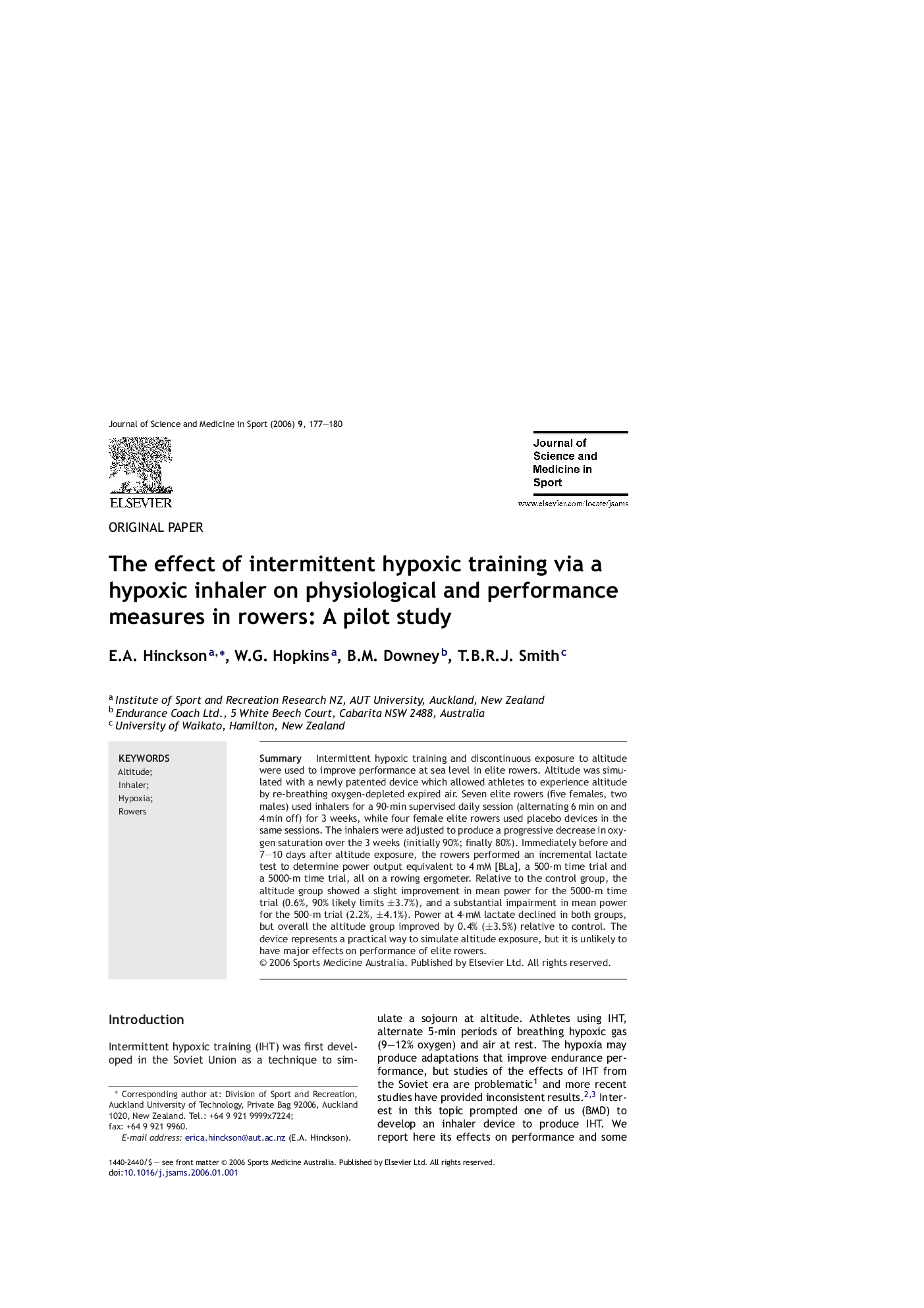| Article ID | Journal | Published Year | Pages | File Type |
|---|---|---|---|---|
| 2701939 | Journal of Science and Medicine in Sport | 2006 | 4 Pages |
SummaryIntermittent hypoxic training and discontinuous exposure to altitude were used to improve performance at sea level in elite rowers. Altitude was simulated with a newly patented device which allowed athletes to experience altitude by re-breathing oxygen-depleted expired air. Seven elite rowers (five females, two males) used inhalers for a 90-min supervised daily session (alternating 6 min on and 4 min off) for 3 weeks, while four female elite rowers used placebo devices in the same sessions. The inhalers were adjusted to produce a progressive decrease in oxygen saturation over the 3 weeks (initially 90%; finally 80%). Immediately before and 7–10 days after altitude exposure, the rowers performed an incremental lactate test to determine power output equivalent to 4 mM [BLa], a 500-m time trial and a 5000-m time trial, all on a rowing ergometer. Relative to the control group, the altitude group showed a slight improvement in mean power for the 5000-m time trial (0.6%, 90% likely limits ±3.7%), and a substantial impairment in mean power for the 500-m trial (2.2%, ±4.1%). Power at 4-mM lactate declined in both groups, but overall the altitude group improved by 0.4% (±3.5%) relative to control. The device represents a practical way to simulate altitude exposure, but it is unlikely to have major effects on performance of elite rowers.
